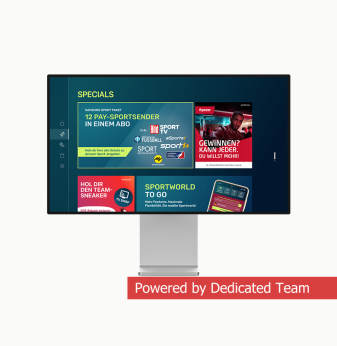JPEG XS vs H.265/HEVC: Which Compression Standard Is Better for Pro Video Streaming?

In the realm of professional broadcasting and ProAV (Professional Audio/Video), video compression plays a crucial role in enabling high-quality streams with minimal latency. Among the competing standards, JPEG XS and H.265/HEVC stand out as two distinct approaches — each tailored for different performance goals.
This article compares JPEG XS and H.265/HEVC in depth: what makes them unique, when to use each, and how they impact workflows in live video production, remote contribution, and IP-based broadcasting systems.
What Is JPEG XS?
JPEG XS is a visually lossless lightweight video compression standard developed by the Joint Photographic Experts Group (JPEG) and standardized under ISO/IEC 21122. It is designed to offer compression ratios from 2:1 to around 10:1 while maintaining extremely low latency and high image fidelity.
Key features of JPEG XS:
- Ultra-low latency (sub-millisecond encoding/decoding)
- Visually lossless quality
- Low computational complexity
- Constant bitrate output
- Support for 4:4:4, 4:2:2, and 4:2:0 chroma subsampling
- Supports 8–16 bit color depth
Use cases include ST 2110-22 workflows, remote production over wide area networks (WANs), video-over-IP transport, and camera-to-cloud connections.
What Is H.265/HEVC?
H.265, also known as HEVC (High Efficiency Video Coding), is a widely adopted inter-frame compression standard standardized by ITU-T and MPEG. It offers higher compression efficiency compared to its predecessor H.264/AVC, reducing file sizes significantly at comparable quality levels.
Key features of H.265/HEVC:
- High compression ratio (up to 50% better than H.264)
- Inter-frame compression using temporal redundancy
- Supports 4K and 8K video resolutions
- Variable bitrate encoding
- Relatively high computational complexity and latency
Use cases include OTT streaming (Netflix, Prime Video), VOD platforms, satellite broadcasting, and long-distance contribution feeds.
JPEG XS vs H.265: Technical Comparison
| Feature | JPEG XS | H.265/HEVC |
| Compression Type | Intra-frame | Inter-frame |
| Latency | <1ms | 100–1000ms |
| Compression Ratio | 2:1 to 10:1 | 50:1 to 200:1 |
| Quality | Visually lossless | Slight loss at high ratios |
| Encoding Complexity | Low | High |
| Use Case Focus | Broadcast, ProAV, ST 2110 | OTT, VOD, satellite |
| Licensing | Royalty-free (XS codec IPs) | Patent-encumbered |
Real-Time Streaming and Latency Constraints
For live production and broadcast environments, latency is often the most critical metric. JPEG XS offers encoding/decoding latencies in the microsecond to sub-millisecond range, making it ideal for real-time applications like:
- Live sports broadcasting
- Studio interconnects
- KVM over IP systems
- Camera-to-cloud workflows
In contrast, H.265’s higher compression ratios come at the cost of greater delay due to its use of inter-frame prediction and GOP (group of pictures) structures. This makes it unsuitable for time-sensitive workflows but excellent for file-based delivery.
Compression Efficiency and Bandwidth Usage
If bandwidth is the bottleneck, H.265 can be more suitable due to its ability to compress content more aggressively while maintaining acceptable visual quality. This is especially useful in:
- Video-on-demand platforms
- Satellite or mobile video
- Archiving high-resolution content
JPEG XS is not designed for maximum compression. It targets visually lossless quality with predictable latency, which means larger bitstreams — but consistent, low-latency performance.
Hardware and Software Ecosystem
JPEG XS is supported by:
- FPGA and ASIC vendors for live processing (e.g., Intel, Xilinx)
- SMPTE ST 2110-22 ecosystem (e.g., Evertz, Nevion, Imagine)
- Some software encoders and decoders in AV-over-IP stacks
H.265/HEVC is supported by:
- Virtually all modern smartphones, TVs, and media players
- Streaming platforms (YouTube, Netflix)
- GPU-accelerated encoders from NVIDIA, Intel, AMD
Thus, JPEG XS fits well within professional broadcast environments, while HEVC dominates consumer and long-tail delivery applications.
Licensing and Royalty Considerations
HEVC is subject to complex licensing structures, involving multiple patent pools (MPEG LA, HEVC Advance, Velos Media). Costs and uncertainty around royalties have been a barrier for some adopters.
JPEG XS, in contrast, offers more favorable licensing conditions, particularly in broadcast applications where vendors control the end-to-end workflow. However, hardware availability is still catching up.

When to Use JPEG XS
Choose JPEG XS if your application demands:
- Real-time, low-latency performance
- Visually lossless quality
- Consistent, deterministic compression
- ST 2110 or IPMX infrastructure compatibility
Examples:
- OB van and live event production
- Camera feeds in studio infrastructure
- Remote collaboration with ultra-low delay
- KVM systems for broadcast control rooms
When to Use H.265/HEVC
Choose H.265 if your application requires:
- High compression efficiency
- Long-term archiving or content distribution
- Mobile and OTT video delivery
- Device compatibility across ecosystems
Examples:
- Streaming to end users
- Cloud-based video hosting
- 4K/8K VOD services
Common Questions
Is JPEG XS better than H.265 for video streaming?
JPEG XS is better for professional low-latency use cases, while H.265 is better for highly compressed consumer video delivery.
Why isn’t JPEG XS used in YouTube or Netflix?
Because JPEG XS prioritizes low latency over compression, making it less efficient for bandwidth-sensitive, large-scale distribution like YouTube or Netflix.
Can JPEG XS replace H.265?
No, they serve different purposes. JPEG XS complements IP-based broadcast workflows, whereas H.265 powers the delivery layer for consumer video.
Conclusion
While both JPEG XS and H.265/HEVC are powerful video compression technologies, they are optimized for very different workflows. JPEG XS delivers on ultra-low latency and deterministic performance — key for live and interactive broadcasting. H.265 offers better compression and is ideal for delivering media over constrained networks.
Choosing the right codec means understanding your application’s priorities: Is latency more critical than bandwidth? Are you targeting broadcast control rooms or global audiences on mobile? Each use case has its winner.
At Promwad, we help media technology vendors build solutions that integrate the right codec for the job — whether it’s a low-latency FPGA-based encoder or a scalable streaming platform. Reach out to discuss how we can support your video pipeline.
Our Case Studies








